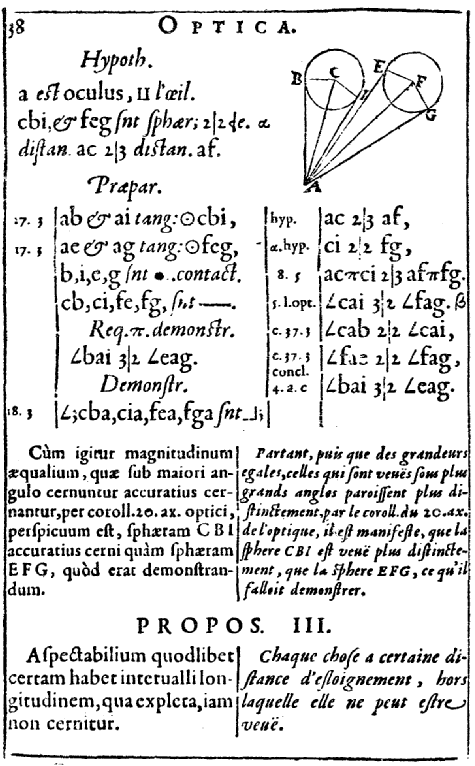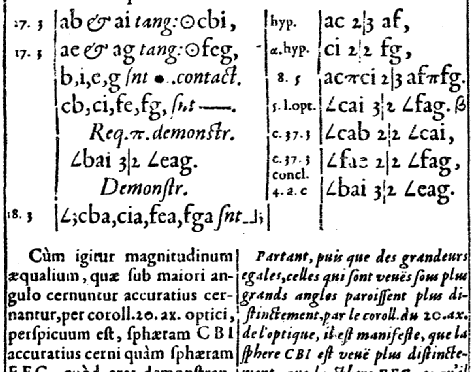Not long ago, I posted about mathematician Pierre de Fermat and his possible Basque connections (spoiler: he had none). However, in reading about this Pierre, I discovered another mathematician who certainly did have a Basque origin: Pierre Hérigone. His greatest contribution to math was in further developing the idea that math could be conveyed in symbols, rather than local language, making it universal. So, all of you who hated sitting through high school algebra, you have people like Pierre Hérigone to blame. For a detailed account of Hérigone’s contributions to algebra, see Maria Rosa Massa Esteve’s article Symbolic language in early modern mathematics: The Algebra of Pierre Hérigone (1580–1643). (Ok, after this post, I’ll lay off the mathematicians for a while…)

- Little is known about the life of Pierre Hérigone (also known by his Latinized name Petrus Herigonius). He was born in France in 1580 and died in Paris in 1643. In his Apologie ou juste défense, Hérigone himself claimed to be of Basque origin – Hérigone would be a variant of the modern Basque Irigoyen. He spent much of his adult life teaching in Paris.
- Some sources claim that Pierre Hérigone was not his real name, but was a pseudonym for one Baron Clément Cyriaque de Mangin. These also suggest that the Baron went by the name Denis Henrion, but there is only one source for these connections, by Claude Hardy, a fellow mathematician. However, their stylings and mathematic descriptions are very different, so modern scholars seem to discount this claim.
- Hérigone is known for one work, the six-volume Cursus mathematicus, nova, brevi, et clara methodo demonstratus, the first volume published in 1634. In this work, Hérigone tried to lay out a complete and consistent mathematical and logic notation, the forerunner to the notation used today in mathematics. Most of what he introduced is no longer used. However, he was the first to use what have now become familiar (at least to mathematicians!) symbols. These include ‘⟂’ for perpendicular or orthogonal (like two lines), and ‘<‘ for angle (though this was slightly changed to ‘∠’ by later authors to avoid confusion with the meaning of less than. Hérigone also introduced the precursor to our modern notation of exponents, to indicate that a number is being raised to a power. He wrote a2, a3, a4… and today we use a2, a3, a4…
- He also described a camera obscura, in the shape of a goblet, which he said one could use to spy on their friends. He didn’t do more than describe it; Johann Zahn was the first to draw this device. Supposedly, when one took a drink, you could see the people behind you.
- In 1634, Hérigone was part of a commission to examine the claims of Jean-Baptiste Morin that he could measure longitude using the position of the moon relative to the stars. Measuring longitude accurately was a critically important technological advance for navigation at sea and there was a monetary award for anyone who could come up with a better method. The commission, which lasted five years and was in constant debate with Morin, concluded that his method was impractical. Hérigone gave the final report and Morin then blamed him for the negative outcome. Hérigone also disliked Morin’s belief in astrology, writing elsewhere that “The desire to know things to come is an ancient disease of the human mind.”
- Other than his time on the commission and his interactions with Morin, little else is known about Hérigone’s life. He seems to have been a famous checkers player, and, as described by Scottish mathematician James Hume, he was the only French mathematician he could deal with as he was not quarrelsome.
- His other major innovation was the so-called major system, in which you convert numbers into sounds and then in to words to remember sequences of numbers. Using these kinds of techniques, Akira Haraguchi has memorized over 100,000 digits of pi.
- There is a crater on the moon, Herigonius, named for him.
Primary sources: Pierre Hérigone, J J O’Connor and E F Robertson, University of St Andrews; Pierre Hérigone, Wikipedia.
Discover more from Buber's Basque Page
Subscribe to get the latest posts sent to your email.


